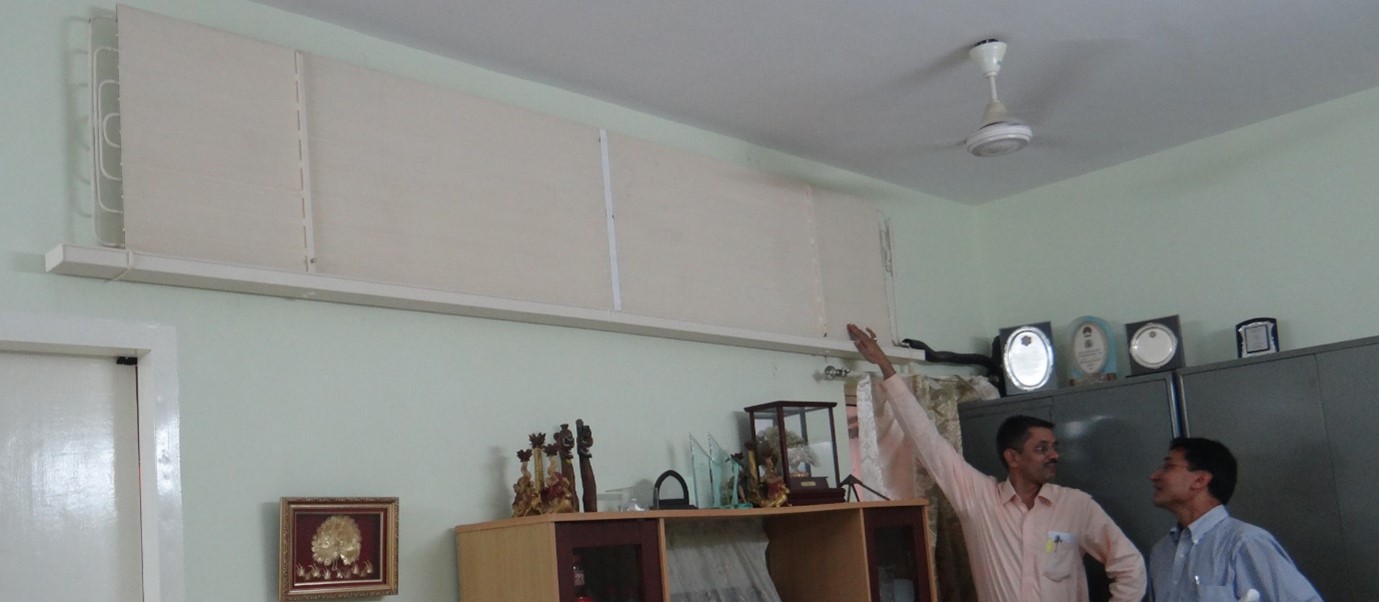Panel Heat and Mass Exchanger
The Panel Heat and Mass Exchanger is designed to handle both heat and mass transfer processes. It can be used for air conditioning, heating, cooling, drying, and separating mixtures through selective condensation or freezing. The design improves efficiency by integrating fins and passages to enhance surface area and heat/mass transfer coefficients while reducing the overall size, weight, and cost compared to conventional systems.
Traditional cooling panels for air conditioning systems fail to manage latent heat loads and need close control of indoor relative humidity using complex parallel systems. They also suffer from inefficiencies due to using different materials for tubes and panels, leading to poor heat transfer. Existing designs need a large area per unit cooling capacity handled. They are bulky, expensive, and less efficient in handling heat and mass transfer tasks.
- Versatile functionality: The innovation is capable of cooling, heating, drying, and separating mixtures through selective condensation or freezing, eliminating the need for parallel systems and reducing complexity and costs.
- Enhanced heat transfer efficiency: The device features integrated passages with internal corrugations and staggered fins, enhancing surface area density and heat transfer efficiency.
- Single material construction: It can be optionally built entirely from a single material, avoiding contact resistance and thermal expansion issues, thereby enhancing overall heat and mass transfer.
- Compact and space-efficient: It has high surface area to projected area ratio (up to 13.5), requiring less installation space and offering significant energy and cost savings.
The prototype comprises modular panel/s made up of aluminium extrusions with integrated fins and passages. The passages can carry phase change materials or sensible heat storage medium/s. The design includes interlocking elements for easy assembly and extension. It has been tested in various configurations, such as cooling panels, radiative condensers, evaporative condensers, ice bank storage, low-temperature dryers and waste heat recovery systems.
The panel heat exchanger offers significant energy savings by improving the efficiency of HVAC systems and reducing the need for additional equipment to handle latent loads. It is very compact and cost-effective as compared to conventional radiant cooling technologies. Additionally, its application for drying agricultural products can significantly enhance livelihood, reduce wastage and improve sustainability.
- HVAC systems: Efficiently caters to air conditioning, heating, cooling, and moisture control
- Industrial drying processes: Dries agricultural products like grains, vegetables, fruits, herbs, and spices
- Thermal storage systems: Stores thermal energy using phase change or sensible heat storage materials
- Desalination and purification: Purifies sea water, milk, and fruit juices through desalination and selective freezing
- Waste heat recovery: Captures and reuses heat from industrial processes, enhancing energy efficiency
- Selective condensation: Separate multicomponent gaseous streams into various condensed fractions without fractional distillation.

